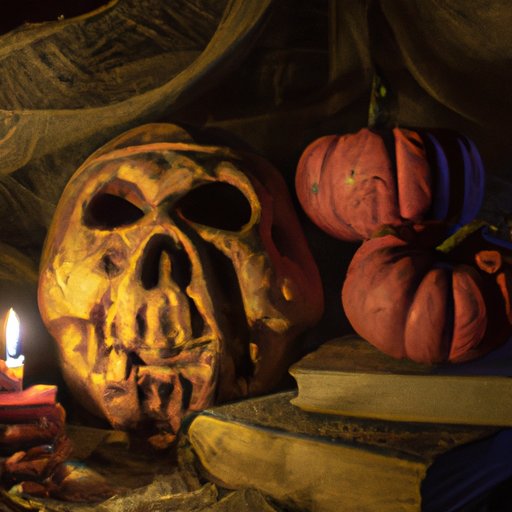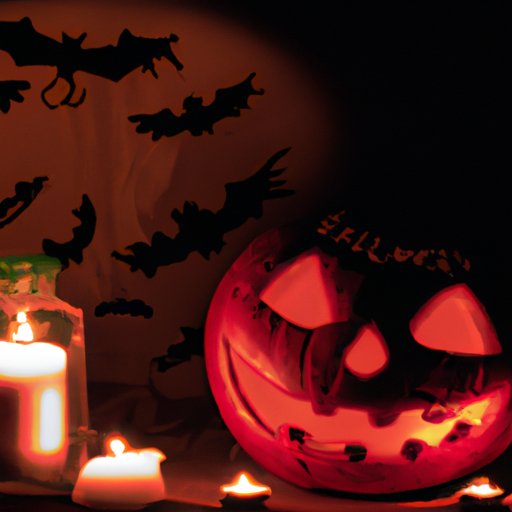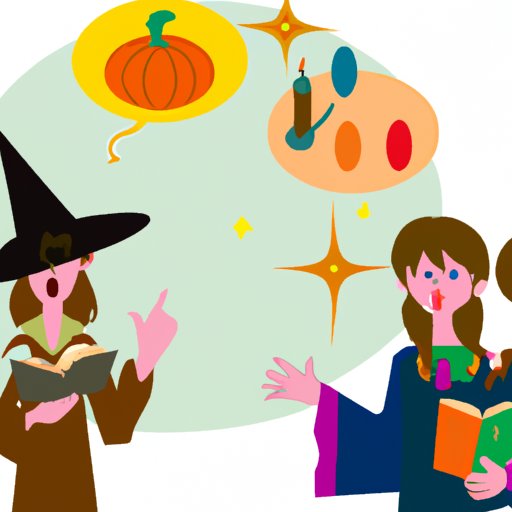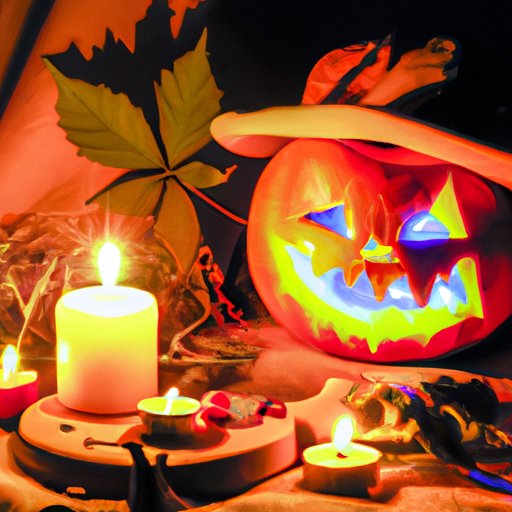Introduction
Halloween is one of the most popular holidays celebrated in countries around the world. The origin of the word “Halloween” is derived from All Hallows Eve, which is the night before All Saints Day. Halloween is a time for people to dress up in costumes, carve pumpkins, tell stories, and enjoy candy and treats. But what is the true meaning behind this spooky holiday? In this article, we will explore the history, legends, and religious significance of Halloween, as well as its modern-day evolution.

Trace the Origins of Halloween and its Ancient Roots
Halloween has its origins in the Celtic culture of Ireland and Britain. The Celts, who lived 2,000 years ago, celebrated their new year on November 1st. This was known as Samhain (pronounced sow-in), which marked the end of the harvest season and the beginning of winter. It was believed that on the night before Samhain, the boundary between the living and the dead became blurred. The Celts believed that the ghosts of the dead returned to earth on this night, causing trouble and damaging crops. To ward off these evil spirits, they lit bonfires and wore costumes made of animal skins.
The Christian influence on Halloween began in the 7th century when Pope Boniface IV designated November 1st as All Saints Day. This day honored the saints and martyrs of the Christian faith. The evening before All Saints Day was known as All Hallows Eve, which later became known as Halloween. Over time, Halloween blended with the Celtic traditions of Samhain, creating a unique holiday full of superstition and folklore.
Examine the History and Legends Behind Halloween
One of the most recognizable symbols of Halloween is the Jack-o-Lantern. The legend behind the Jack-o-Lantern dates back to an Irish myth about a man named Stingy Jack. According to the story, Jack invited the Devil to have a drink with him, but Jack didn’t want to pay for his drink. He convinced the Devil to turn himself into a coin so he could use it to buy their drinks. Once the Devil did this, Jack put the coin in his pocket next to a silver cross, which prevented the Devil from changing back into his original form. Jack eventually freed the Devil, but only after making him promise never to take his soul when he died.
Jack eventually died, but since he had tricked the Devil twice, he couldn’t go to Heaven or Hell. Instead, he was forced to wander the earth carrying a burning coal inside a hollowed out turnip. This became known as a Jack-o-Lantern and was used by people to ward off evil spirits. Today, the tradition of carving pumpkins is still practiced during Halloween.
Trick-or-treating is another popular Halloween tradition. The history of trick-or-treating can be traced to the early All Souls’ Day parades in England. During the parades, poor citizens would beg for food and people would give them pastries called “soul cakes” in return for their promise to pray for the giver’s dead relatives. The tradition of dressing up in costumes and begging for treats on Halloween has evolved from this custom.
Halloween is also associated with supernatural stories and legends. People have long believed that on Halloween night, ghosts and other supernatural creatures come out to haunt the living. These stories are often used to explain strange occurrences or to scare children into behaving. While these stories may be far-fetched, they are part of the charm of Halloween.
Explore the Religious Significance of Halloween
Halloween is sometimes seen as a purely secular holiday, but it has deep religious roots. Many pagans celebrate Samhain as the end of the harvest season and the start of winter. They believe that on this day, the veil between the living and the dead is thin and ghosts can roam the earth. For Christians, Halloween is a time to remember the saints and martyrs who have gone before us.
In modern times, Halloween has taken on a variety of meanings. For some, it is a time to celebrate the changing of the seasons. For others, it is an opportunity to dress up in costumes and enjoy parties. Some people even view Halloween as a spiritual holiday, using it as an opportunity to connect with their ancestors and reflect on life and death.

Uncover the Historical Reasons for the Popularity of Halloween
Halloween has become increasingly popular over the years, with people all over the world celebrating it in some way. One of the reasons for this is its cultural traditions. From carving pumpkins to donning costumes, the rituals of Halloween are deeply entrenched in many cultures. In addition, the commercialization of Halloween has helped to spread its popularity. Companies have capitalized on the holiday by selling decorations, candy, costumes, and other merchandise.
Halloween has also become popular because of its global appeal. Countries around the world have adopted the holiday, each with their own unique traditions. For example, in Mexico, people celebrate the Day of the Dead, which is a three-day festival honoring the deceased. In Japan, people wear costumes and visit shrines to pray for happy lives.

Discuss the Meaning of Halloween Symbols and Traditions
Halloween is filled with symbols and traditions that have special meanings. Costumes represent the idea of transformation, while candy symbolizes the sweetness of life. Pumpkins, bats, and spiders are all symbols of the supernatural, while decorations such as jack-o-lanterns are meant to ward off evil spirits. Trick-or-treating is a reminder of the ancient practice of begging for food in exchange for prayers.
The colors of Halloween are also significant. Orange and black are the traditional colors of the holiday, representing the colors of fall and death. Purple and green are also used to represent magic and mystery.
Look at How Halloween has Evolved Over Time
Halloween has changed drastically over time. From its ancient roots to its modern-day interpretations, Halloween has transformed from a pagan ritual to a worldwide phenomenon. Technology and social media have also influenced the way people celebrate Halloween. With the advent of digital platforms, people can now share their costumes, decorations, and experiences with friends, family, and strangers around the globe.
As technology continues to advance, it is likely that Halloween will continue to evolve. The future of Halloween may include virtual reality, augmented reality, and more interactive experiences. No matter how it changes, however, the core meaning of Halloween will remain the same: a chance to connect with the supernatural, honor our ancestors, and celebrate the changing of the seasons.
Conclusion
Halloween is a holiday rich in history and symbolism. Its roots can be traced back to the Celtic celebration of Samhain and the Christian observance of All Saints Day. Throughout the centuries, the holiday has taken on various forms, from ghost stories to costume parties. Despite its evolution, the meaning of Halloween remains the same: a time to connect with our past and embrace the spirit of the season.
(Note: Is this article not meeting your expectations? Do you have knowledge or insights to share? Unlock new opportunities and expand your reach by joining our authors team. Click Registration to join us and share your expertise with our readers.)
